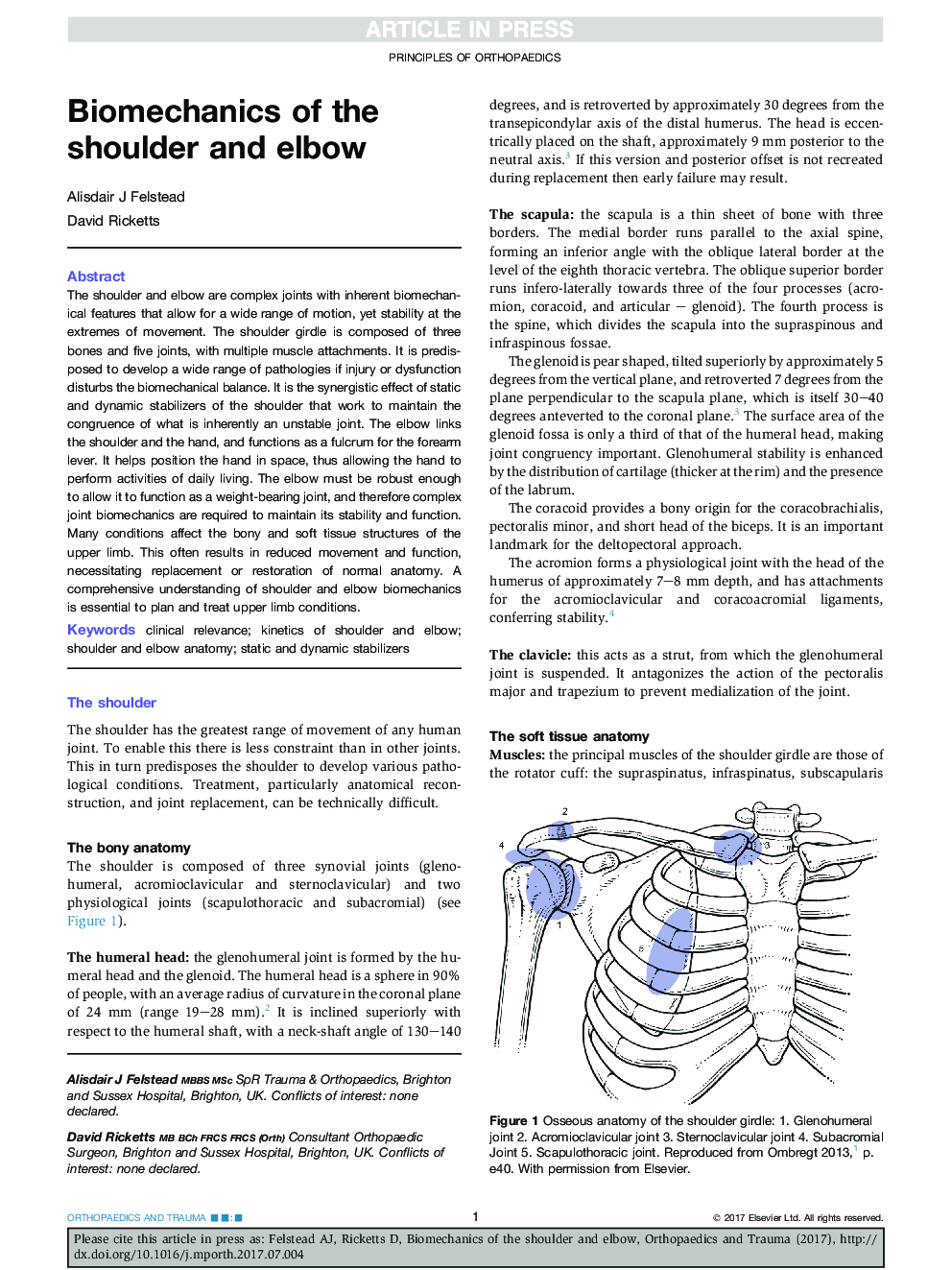| Article ID | Journal | Published Year | Pages | File Type |
|---|---|---|---|---|
| 8802010 | Orthopaedics and Trauma | 2017 | 6 Pages |
Abstract
The shoulder and elbow are complex joints with inherent biomechanical features that allow for a wide range of motion, yet stability at the extremes of movement. The shoulder girdle is composed of three bones and five joints, with multiple muscle attachments. It is predisposed to develop a wide range of pathologies if injury or dysfunction disturbs the biomechanical balance. It is the synergistic effect of static and dynamic stabilizers of the shoulder that work to maintain the congruence of what is inherently an unstable joint. The elbow links the shoulder and the hand, and functions as a fulcrum for the forearm lever. It helps position the hand in space, thus allowing the hand to perform activities of daily living. The elbow must be robust enough to allow it to function as a weight-bearing joint, and therefore complex joint biomechanics are required to maintain its stability and function. Many conditions affect the bony and soft tissue structures of the upper limb. This often results in reduced movement and function, necessitating replacement or restoration of normal anatomy. A comprehensive understanding of shoulder and elbow biomechanics is essential to plan and treat upper limb conditions.
Keywords
Related Topics
Health Sciences
Medicine and Dentistry
Orthopedics, Sports Medicine and Rehabilitation
Authors
Alisdair J. Felstead, David Ricketts,
